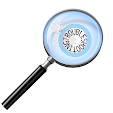AIRCRAFT AVOID airspace that has volcanic ash as it can wreck the flight ability of propeller and jet aircraft. The ash is so fine that it will invade the spaces between rotating machinery and jam them – silica in ash melts at about 1,100 degrees and fuses to turbine blades and nozzle guide vanes (another part of the turbine assembly), which in modern aircraft operate at 1,400 degrees.
Isso pode ser muito perigoso - quando a tripulação de duas aeronaves, incluindo um Boeing 747 da British Airways, descobriu em 1982 quando eles voaram através de uma nuvem de cinza do vulcão Galunggung na Indonésia.
Severity Index for Ash Encounters (from ICAO 2001, Appendix I, P. I-6):
•Class 0 Encounter: Acrid odor (e.g. sulfur gas) noted in cabin; electrostatic discharge (St. Elmo's fire) on windshield, nose, engine cowls; no notable damage to exterior or interior.
•Class 1 Encounter: Light dust in cabin (no oxygen used); exhaust gas temperature (EGT) fluctuations with return to normal values.
•Class 2 Encounter: Heavy cabin dust ("dark as night" in cabin); contamination of air handling and air conditioning systems requiring use of oxygen; some abrasion damage to exterior surface of aircraft, engine inlet, and compressor fan blades; frosting or breaking of windows due to impact of ash; minor plugging of pitot-static system (insufficient to affect instrument readings); deposition of ash in engine.
•Class 3 Encounter: Vibration of engines owing to mismatch, surging; plugging of pitot-static system to give erroneous instrument readings; contamination of engine oil hydraulic system fluids; damage to electrical system; engine damage
•Class 4 Encounter: Temporary engine failure requiring in-flight restart of engine.
•Class 5 Encounter: Engine failure or other damage leading to crash.










Nenhum comentário:
Postar um comentário